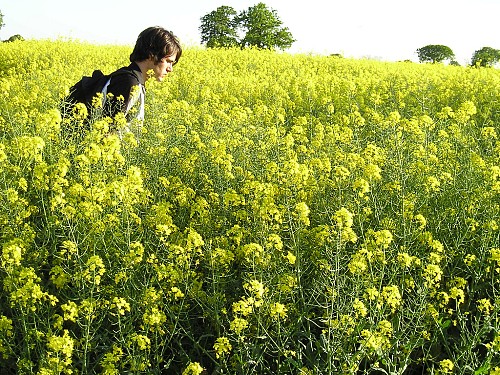Outdoor Allergens: Minimize Your Exposure Even In Warm Weather
Outdoor living is the best … except when you suffer from allergies. Being outside means exposure to pollen and mold, which can cause sneezing, wheezing, reddened itchy eyes, coughing, and a whole host of other unpleasant symptoms. While there is currently no known cure for allergic rhinitis, you can still do plenty to control the condition. One of the most effective actions is avoiding allergens (allergy triggers) outdoors. Here’s how.
Know your allergies. See a health practitioner to verify that your symptoms, such as watery eyes, stuffy nose, and sneezing, are indeed caused by allergies. Find out which types of plant pollen you are allergic to. Select an app to keep track of your symptoms – type, season, time of day, exposure to allergens, and any other notable conditions. This will help you be aware of your personal allergy triggers.
Keep an eye on the pollen count. The level of pollen in the air is measured on a scale from 0-12. When your local weather report warns that the pollen count has risen above 7, try to limit outdoor activities until it goes down to a more tolerable level. Be especially vigilant during periods when the concentration of pollen tends to be at its peak -- usually evening for grass and tree pollens and morning for ragweed and other weed pollens. Remember that windy, hot, dry days generally predict an extra-high level of pollen.
Minimize opening windows and doors. When the pollen count is uncomfortably high, open your windows and doors as seldom as possible. Use an evaporative cooler or an air conditioner, rather than a window fan, for the duration. An overload of pollen outside is bad enough – you do not want to bring it into your home as well. NOTE: Make sure that your A/C filter is cleaned or changed regular (although preferably by someone who does not have problems with allergies), in particular during periods of heavy use.
Take precautions when you do go outdoors. When you must go outside during peak periods for pollen, wear a breathing mask. After you come back into the house, leave your shoes at the door; then shower and change your clothes, whenever possible, to remove pollen which you may have inadvertently picked up. If you use antihistamines, take them before venturing outdoors, rather than waiting till you’re hit by a full-blown allergy attack. (In fact, hay fever medications work best when used on a consistent basis, beginning before the start of allergy season.)
Don’t pick up pollen from your pet. Wash your hands after petting your dog or outdoor cat. Brush or wipe fur as soon as he or she comes into the house and with the approval of your vet, increase the frequency of baths (or at least water-only rinses) to once a week. Both of these steps will reduce the amount of pollen on your pet’s coat.
Beg off lawn care duty. If you are sensitive to grass pollen or mold, your lawn can be a major source of irritation, particularly during the process of mowing the grass or raking up leaves. Ask another family member to take on these chores … or hire a professional lawn service. Consider replacing your grass with one of the new low-pollen hybrids or better yet, environmentally sound, allergy friendly xeriscaping.
Plan travel carefully. Before booking your vacation, check the pollen forecast for the area you’d like to visit. Keep the windows up when traveling by car. Bring along a supply of your usual allergy treatment. (In a pinch, you can improvise a natural nasal rinse from 1 cup of water, boiled and cooled to room temperature, mixed with ½ teaspoon each of table salt and baking soda. This will soothe your itchy, drippy nose.)
This article is based partially on material from Healthwise.
Laura Firszt writes for networx.com.
Looking for a Pro? Call us (866) 441-6648

Related Experiences

A Handyman To Reinstall My Microwave Before It Did Serious Damage

Find A Painter Willing To Work With The Style YOU Have In Mind




